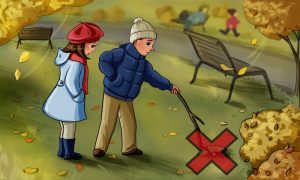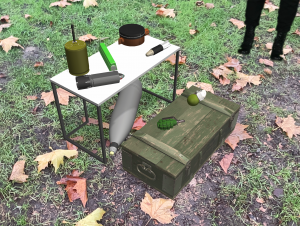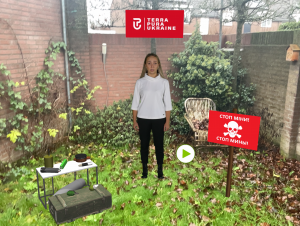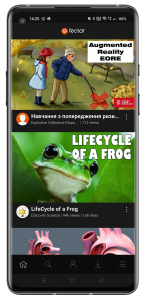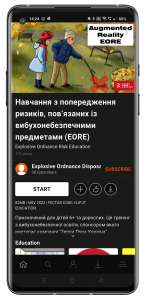Dutch VR/AR app helps Ukrainian children to recognize the dangers of mines
Dutch startup Fectar has developed an app that teaches Ukrainian children to recognize mines. This first-ever interactive augmented reality (AR) hologram lesson was created for explosives education. The lesson stems from the question soldier Charles Valentine asked himself: “How can we help the Ukrainian people to demine their country if 30% of the ammunition fired has not exploded but is still there?”
Valentine, soldier in the ‘Explosive Ordnance Disposal – EOD’, wrote an article on social media about the war in Ukraine*. He appealed for help in recognizing and cleaning up the ammunition in the country. “About 30% of the ammunition fired does not explode, but is still in the country. At great risk to the population.” In his search for a solution, he came across Fectar, a Dutch Metaverse Creator Platform for Augmented Reality (AR) and Virtual Reality (VR). He discovered the possibilities of the AR/VR app of this Dutch startup and built an interactive 3D lesson for recognizing mines. A life-saving learning tool for children in war zones.
Education in Ukraine
The goal is to reach at least 15,000 ambassadors with the virtual lesson about the dangers of mines. The Ukrainian organization ‘Terra Pyra’** will roll out the training of the lesson throughout Ukraine. They will introduce residents and their children to the operation of AR on their mobile phones in community centers and through online training. The free Fectar app has been specially developed to offer a full Augmented Reality experience on older smartphones with a slow internet connection.
Learning like in the real world
It is the first AR lesson used to explain the dangers of unexploded explosives. It shows 3D models of different types of ammunition. In the lesson, for example, children learn what a mine looks like in real life and that it is dangerous to pick up a mine. This AR technology contributes to a better learning experience. Unlike VR, which puts users in a fully digital world, AR sees the real world around them overlaid with digital information and 3D models of situations. A hologram of a Ukrainian teacher continues to look at the user, so that there is contact with users and this makes education possible. During use, the app measures the learning process and the training can be adjusted.
AR provides safe learning environment and better understanding
AR not only allows students to absorb their learning material better and faster, but it also gives them the opportunity to learn more naturally and intuitively. Traditional education is more passive and uses abstract concepts and theories that are difficult to understand, but through AR, children end up in ‘real life’ situations that they can recognize or explore interactively. This accessible and safe way of learning leads to better results. For example, virtual excursions or simulations can provide a better understanding of the world, but also of scientific subjects, history, geography, practical, complex or creative ideas, and in the case of Ukraine: munitions.
Sources:
*Ukraine ArcGIS story: https://storymaps.arcgis.com/stories/eb04510258bb424ab0ffd79aa3934611
**Ukrainian organization: https://terrapura.ngo/
===end of press release===
Note to the editor (not for publication):
For more information about this press release or about Fectar, please contact:
Jennifer Delano, phone: +31 6 397 554 93, email.
